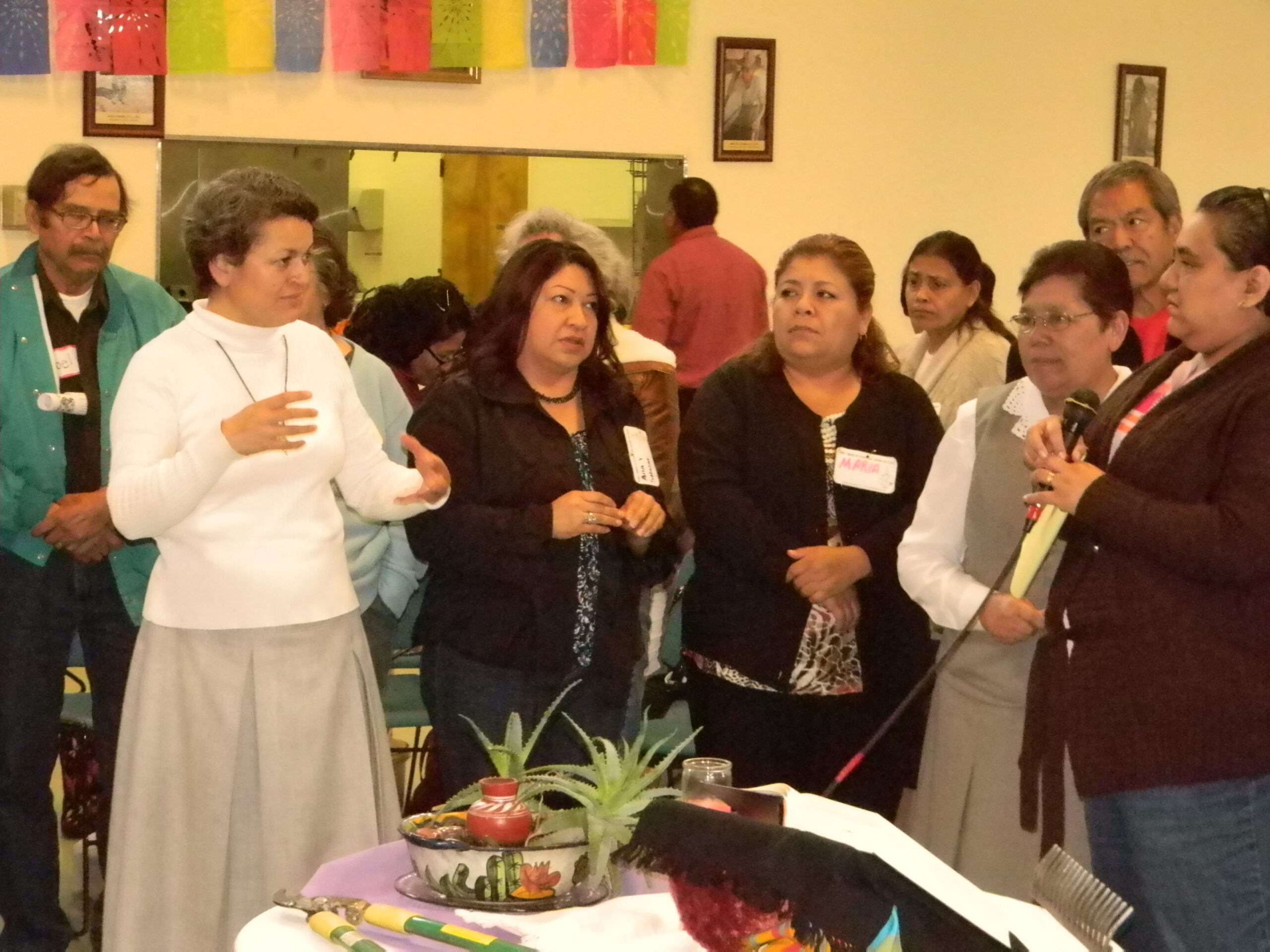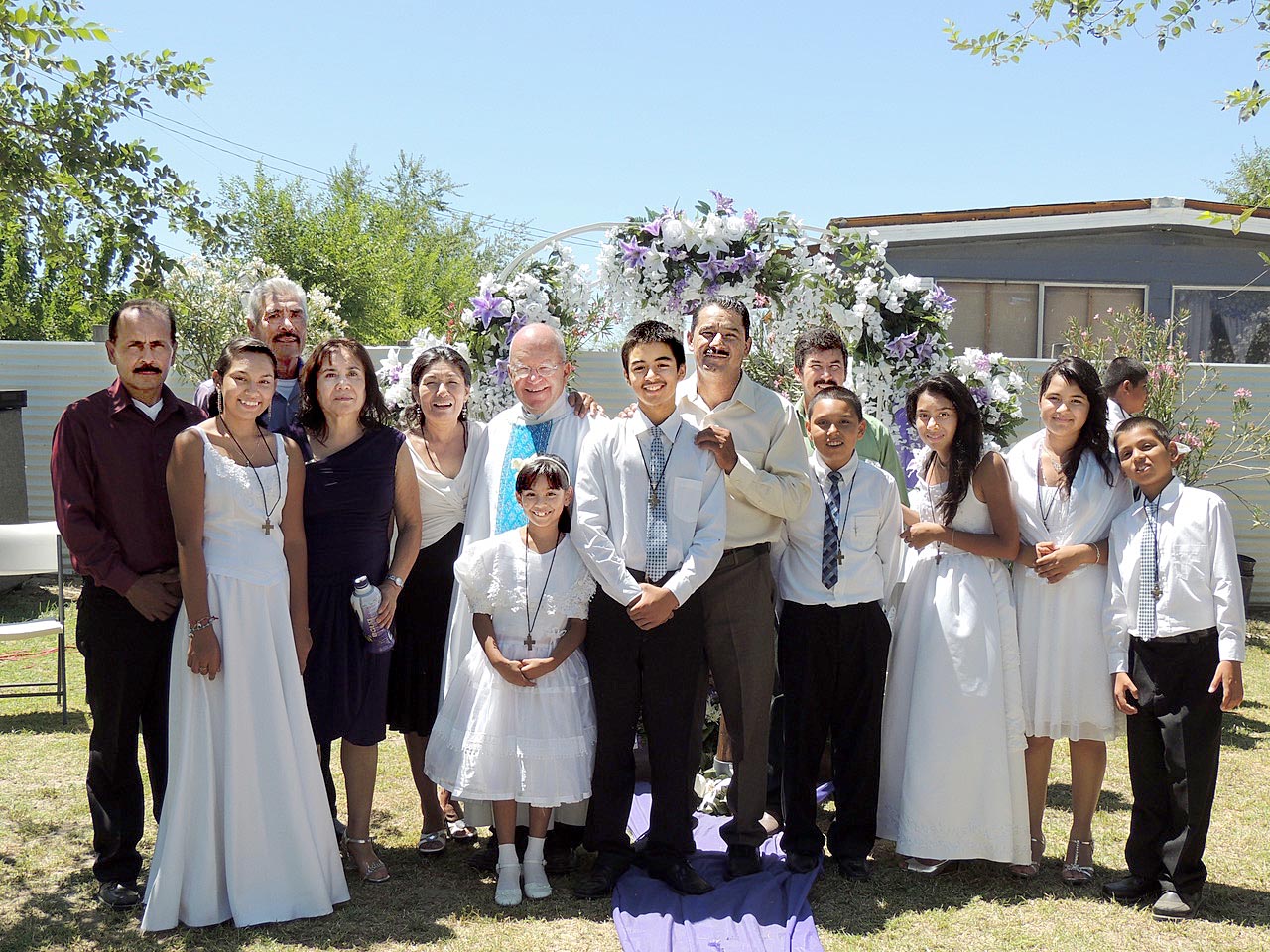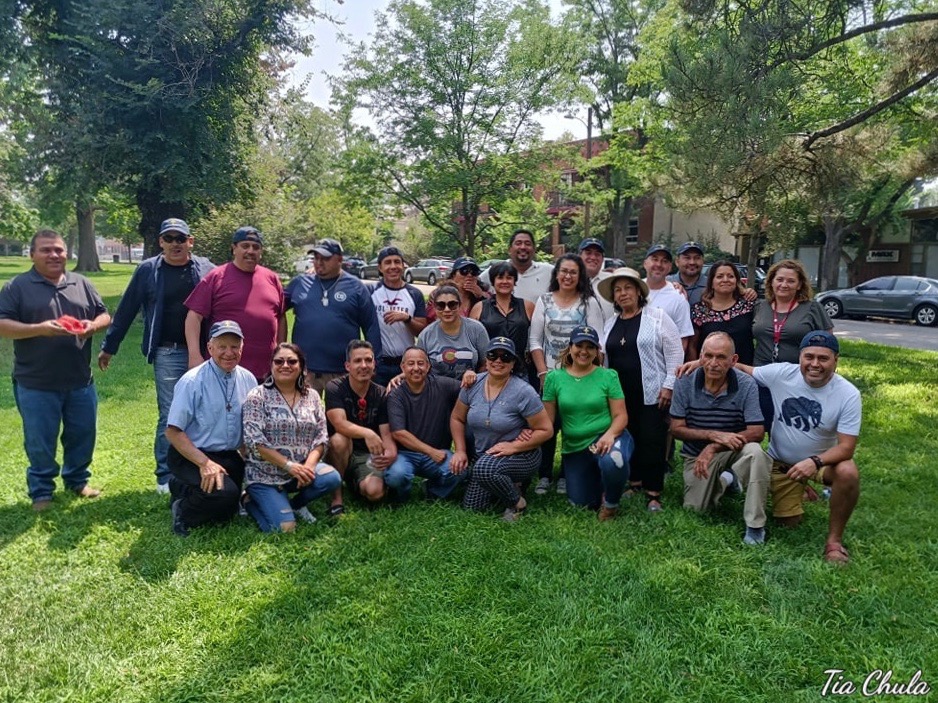Padre Migrante: An unusual resume for a Director for Campesino Ministry – Un currículum inusual para un Director del Ministerio Campesino
Un currículum inusual para un Director del Ministerio Campesino
Cuando comencé a trabajar en la Oficina de Ministerio Pastoral de la Diócesis de Fresno, era uno de los coordinadores de varios ministerios dentro de la Diócesis. La oficina incluía al Director de Educación Religiosa, el Director de Ministerio Prisionero, el Director del Pastoral Juvenil, el Director del Ministerio del Campus, y otros ministerios. Todos estaban calificados con títulos y formación en sus campos. Mi currículum es de una naturaleza diferente a la de otros ministerios. Había trabajado en una variedad de iniciativas del ministerio hispano, pero fuera del Obispo Steinbock, me encontré tratando de demostrarles a los demás que pertenecía a la oficina como Coordinador del Ministerio Campesino. La experiencia en el ministerio juvenil en Casa San Alfonso, la predicación de misiones bilingües en comunidades rurales en quince estados, nueve veranos de la misión a los trabajadores de la cosecha en The Dalles, y mi año sabático me prepararon bien para comprender la vida de los migrantes, especialmente los que trabajan en la agricultura, pero no hay títulos o certificaciones basadas únicamente en la experiencia de vivir y caminar con migrantes.
Campesinos, los miembros del sindicato de la UFW, los agricultores y los cultivadores abrieron sus casas para mí. Se dieron cuenta de que yo era un director diferente del ministerio campesino. La Diócesis de Fresno tenía una historia buena de trabajar con caravanas de trabajadores migrantes después de varias cosechas. Los redentoristas jugaron un papel importante en ese ministerio desde nuestra casa misionera parroquial en Fresno desde 1908 hasta finales de la década de 1990. En la década de 1920 teníamos la famosa capilla de ruedas, Santa Teresita. Era una casa móvil primitiva que ofreció misiones en campamentos de migrantes. Celebraban misa y preparaban niños para los sacramentos. Muchas comunidades religiosas y trabajadores laicos impartieron clases de religión en varios campamentos y ofrecieron ministerio a los campesinos que pasaban por las comunidades cada año. Los pastores que entendieron la naturaleza estacional del trabajo en el Valle Central de California me apreciaron y me recibieron en sus comunidades.
Zeferino González fue director del Ministerio Campesino durante más de treinta años. Coordinó la participación diocesana en los tres Encuentros nacionales de Ministerio Hispano que prepararon el Plan Pastoral Nacional para el Ministerio Hispano en 1988. Dirigió más de 900 Comunidades Ecclesiales de Base. Muchos de esos grupos formaron la base del ministerio campesino en la Diócesis. Murió tres años antes de que yo fuera a Fresno. Fui el beneficiario de su tremendo trabajo, ya que había alrededor de 80 líderes de grupos de catequistas en la diócesis y cerca de 1,000 voluntarios ayudando en el ministerio.
Cambios en la vida de trabajadores migrantes
Si bien la diócesis tenía una larga historia de trabajo con campesinos migrantes, la diócesis necesitaba adaptarse a los cambios en la agricultura y la vida de los trabajadores de temporada. Nuevos métodos de producción y mecanización estaban cambiando la necesidad de los trabajadores de viajar en caravanas siguiendo las temporadas de cosecha. Hubo una gran reducción en el número de trabajadores que seguían las cosechas de sur a norte y al revés. Muchos productores de frutas y verdura adoptaron métodos que extendían las temporadas de cosecha para ciertos cultivos y tenían una variedad de cultivos que se recolectan en diferentes temporadas. Al hacerlo, podrían reducir la necesidad de las bandas de migrantes que viajan y los costos de vivienda para los trabajadores migrantes. Muchos trabajadores podían mantener el trabajo a menos de cincuenta millas de sus hogares, lo que les permitía viajar diariamente a los lugares de trabajo e irse a casa todas las noches. Los trabajadores de temporada comenzaron a ser propietarios de viviendas y residir en comunidades durante todo el año.
Hay algunas cosechas que siguen dependiendo del trabajador viajero por la intensidad y brevedad de la cosecha como la cereza. El trabajo en The Dalles, OR me permitió adquirir una gran experiencia con trabajadores reconocidos en su trabajo itinerante, pero para muchos de los trabajadores de The Dalles, la cosecha de cerezas fue la única vez que las familias salieron de California para ir a cosechar. Durante diez meses al año, muchos residían en California y eran parte de la comunidad de trabajo estacional que se integraba en sus comunidades.
Desafortunadamente, muchos pastores y directores de educación religiosa no reconocen las circunstancias especiales que crean dificultades para que los trabajadores participen en los programas ordinarios de las parroquias en las ciudades y pueblos del Valle Central. Si bien todavía hay algunas caravanas de trabajadores que viajan del sur al norte para trabajar, muchos campesinos trabajan a menos de ochenta kilómetros de sus comunidades de origen. No viajan cientos de millas, no viven durante meses en viviendas para migrantes mientras siguen las cosechas. Muchas parroquias necesitaban orientación sobre cómo acomodar a dichos trabajadores en programas de preparación sacramental. El obispo Steinbock reconoció que su director del Ministerio Campesino tenía que ser alguien que caminara con los trabajadores migrantes.
An unusual resume for a Director for Campesino Ministry
When I began working in the Office of Pastoral Ministry for the Diocese of Fresno, I was one of many coordinators of various ministries within the Diocese. Our office included the Director for Religious Education, the Director of prison ministries, the Director of Youth Ministry, the Director of Campus Ministry, and several other ministries. All were qualified with degrees and training in their fields. My resume was of a different nature than other ministries. I had worked in a variety of Hispanic Ministry initiatives, but outside of Bishop Steinbock, I found myself trying to prove to others that I belonged in the office as Director for Campesino Ministry. My background in youth ministry at Casa San Alfonso, preaching parish missions in rural communities in fifteen states, nine summers of running sacramental missions for harvest workers in The Dalles, Oregon and my sabbatical prepared me well for understanding the lives of migrants and immigrants, especially those working in agriculture, but there are no degrees or certification solely based on the experience of living and walking with migrants.
Farm workers, UFW union members, farmers and growers welcomed me into their lives. They realized that I was a different kind of director for campesino ministry. The Diocese of Fresno had a solid history of working with caravans of migrant workers following various harvests. Redemptorists played a significant role in that ministry from our parish mission house in Fresno from 1908 until the late 1990’s. In the 1920’s we had the famous chapel car, Santa Teresita. It was a primitive mobile home that set up camp in migrant camps celebrating Masses, preparing children for sacraments and evangelizing migrants. Many religious communities and lay workers taught religion classes in various camps, and they offered many more services to the seasonal workers who passed through communities every year. Pastors who understood the seasonal nature of work in the Central Valley of California appreciated and welcomed me to their communities.
Zeferino Gonzalez was the director for Campesino Ministry for over thirty years. He coordinated the diocesan participation in the three national Hispanic Ministry Encuentros that prepared the way for the National Pastoral Plan for Hispanic Ministry in 1988. He directed over 900 Comunidades Ecclesiales de Base. Many of those groups formed the foundation for campesino ministry in the Diocese. He died three years before I went to Fresno. I was the beneficiary of his tremendous work, as there were about 80 leaders of groups of catechists in the diocese and nearly 1,000 volunteers helping in the ministry.
Changing patterns of migrant farm work
While the diocese had a long history of working with migrant farm workers, the diocese needed to adapt to changes in agriculture and the work patterns of seasonal workers. New methods of production and mechanization was changing the need for workers to travel in caravans following harvest seasons. There was a great reduction in the numbers of workers following the crops from the south to the north and back again. Many fruit and vegetable producers adopted methods that extended the harvest seasons for certain crops and having a variety of crops that are harvested in different seasons. Doing so, they could reduce the need for the traveling bands of migrants and costs of housing for the migrant workers. Many workers could maintain work within fifty miles of their homes, allowing them to commute to work sites and go home each evening. Seasonal workers began to own homes and reside in communities year-round.
There are some harvests that continue to rely on the traveling worker due to the intensity and brevity of the harvest for crops such as the cherry. The work that I did in The Dalles, Oregon allowed me to gain great experience with workers recognized in their itinerant work, but for many of the workers in The Dalles, the cherry harvest was the only time that the families left California for a harvest. For ten months of the year, many resided in California and were part of the seasonal work community that blended into their communities.
Unfortunately, many pastors and religious education directors fail to recognize special circumstances that create difficulties for workers to participate in the ordinary programs of parishes in cities and towns of the Central Valley. While there are still some caravans of workers that travel from the south to the north for work, many campesinos work within fifty miles or less from their home communities. They are not traveling hundreds of miles, living for months in migrant housing as they follow the harvests. Many parishes needed direction on how to accommodate such workers in programs of sacramental preparation. Bishop Steinbock recognized that his director for Campesino Ministry had to be someone who walked with the migrant workers.
Sign up here to receive Padre Migrante blog posts via email.
“Sign up here to receive Padre Migrante blog posts via email.
Oh Jesús, tú nos llamas: “Síganme”. Bendice, Señor, a todos los que acogen tu llamado. Puede que el camino no sea fácil, pero tenemos la confianza de que todo es posible si caminamos contigo. Que este viaje nos abra los ojos a las maravillas de tu amor por nosotros. Oramos por toda tu gente, por todos los creyentes e incrédulos, por los líderes y seguidores. Oramos por la sanación, el perdón, la compasión, la justicia y la paz. Oramos para que, al seguirte, nosotros también podamos ser pescadores de hombres. Bendícenos en nuestro viaje.
O Jesus, you call us, “Come after me.” Bless, O Lord, all who welcome your call. The path may not be easy, but we have confidence that all things are possible if we walk with you. May this journey, open our eyes to the wonders of your love for us. We pray for all your people, for all believers and unbelievers, for leaders and followers. We pray for healing, for forgiveness, for compassion, for justice, for peace. We pray that as we follow you, we too can be fishers of men. Bless us on our journey.




